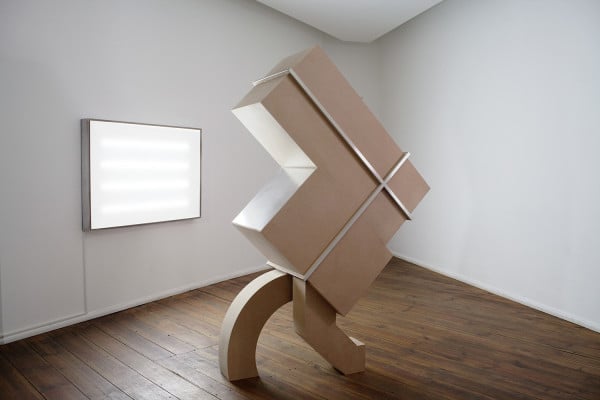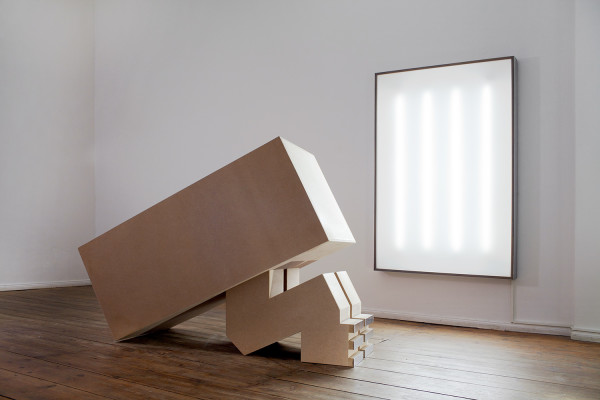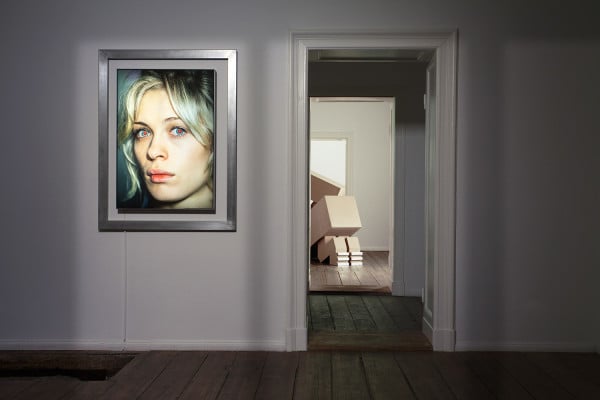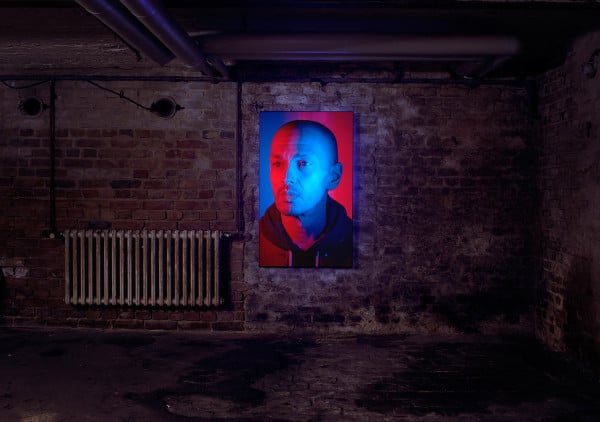Art & Exhibitions
Nothing is Safe at Alona Rodeh’s ‘Safe and Sound’ Exhibition in Berlin
How club culture and fashion appropriated markers of safety.

Photo: tktktt
How club culture and fashion appropriated markers of safety.

Hili Perlson

“Safe and Sound,” a challenging exhibition at Grimmuseum by Israeli artist Alona Rodeh, is a balancing act of seduction and foreboding. But that’s hardly a coincidence: Rodeh, who already has exhibitions in major Israeli institutions under her belt—though this is her first solo show in the German capital—examines aspects of safety and security implemented into everyday design, architecture, and audiovisual means, and the consequences these strategies may have on our freedom of movement.
Naturally, we want to know that safety in the public sphere is guaranteed by whoever is in charge. The price we pay? Humiliating airport security controls, among other things. But that might not be the worst of it. Rodeh points at the possibility of a new kind of trauma, propagated by constant if not innate sense of danger; being exposed to a collective, permanently alarmed state of being is surely not without its physiological consequences.

Alona Rodeh, The Floor Licker (2015)
Photo: Vlad Margulis Courtesy the artist
Three striking sculptures are at the heart of the show. Just bigger than life-size, the artworks are installed in three connected rooms in the exhibition space, while each is illuminated by exposed rows of neon lights in empty light-boxes. Light is a key element in the show, and is used as theme, material, or to dramatize the presentation of the works on view. The sculptures are reminiscent of the rectangular “running man” icon, featured on green fire exit signs since the late 1970s. (The signage is standard for Europe, Canada, and parts of Asia-Pacific, but not the US).
It’s as if the icons have escaped their own function, and taken off in their state of alarm. One seems to be carrying a precious load on its back, while another seems to be kissing the ground, or perhaps bending forward in prayer. While their “torsos” and arms have solidified into massive rectangles, their “legs” are rather elaborately executed, and perform the staggering act of balancing the bulky upper parts. The sculptures thus oscillate towards abstraction, with humorous allusions to Minimalism and some of its most recognizable tropes. After all, the pared-down language of globally standardized visual communication champions narrative via reduced geometric abstraction.

Alona Rodeh, Girl (2015)
Photo: Vlad Margulis Courtesy the artist
Rodeh examines the alternative narratives spawned by ingeniously engineered audiovisual means designed to communicate the presence of security and control (which are very different to covert surveillance), and the ones devised to signal imminent danger. The works on view, which also include a video installation, C-prints in light boxes, and posters, look at what happens when these audiovisual cues trickle down into popular culture, where they are stripped of their semantics and gain new semiotic classifications.
The process is always the same: appropriated into subculture aesthetics, music, and nightlife, these signifiers finally become fashion. And say what you will about fashion, but hardly any other realm of visual culture has the ability to metabolize cultural markers, reconfigure them (first ironically perhaps, then indiscriminately), and spit them out to the masses, where they continue to evolve freely. It’s very effective.

Alona Rodeh, Rachid (safe & sound) (2015)
Photo: Vlad Margulis Courtesy the artist
In an adjacent “reading room” dedicated to the eponymous publication accompanying the show, a series of posters looks at the new allure that reflective materials—traditionally used in high-visibility wear for safety—have found in sportswear and club fashion.
That the bright material has become synonymous with authority was best proven in April of this year, as explained in the publication, when by simply donning high-visibility vests, burglars managed to walked off with more than $15 million worth of jewelery at the Hatton Garden heist in London, while also carrying the heavy machinery they’d used to drill into the safes. It was time to strip hi-vis wear of its meaning. (Indeed, it’s almost as if the artist had anticipated Jeremy Scott’s hi-vis Summer 2016 collection for Moschino, presented in Milan this past Saturday).
The sound of sirens—a mix of car sirens or bomb alarms—fade into a techno track which resonates in the basement, where the video Rachid (Safe & Sound) (all works 2015) is installed. We see the stoic face of a man; his features are dark, Oriental perhaps, and red and blue lights reflect on his face. It’s a classic cinematographic gesture, projected here on reflective material, as if to drive home the point that it’s the viewer who’s confronted with their own choices. The man could be in a club, the strobe lights flickering on his features. Or he could be watching the scene of an accident, his face bathed with the lights of police cars and ambulances. Or is he getting arrested? The scene set by Rodeh obfuscates the line between revelling in escapism, and real danger. Nothing is for certain, and nothing is safe. But that’s the thrill.
Alona Rodeh, Safe and Sound (Evolutions) is on view at Grimmuseum, Berlin, from September 13 – October 17, 2015.